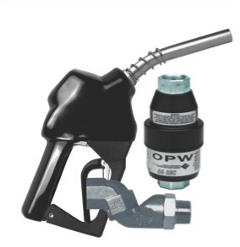 In 1990, the U.S. Environmental Protection Agency (EPA) passed amendments to the Clean Air Act establishing standards to control evaporative emissions from gasoline. These amendments required that service stations adopt Stage II vapor recovery systems that capture gasoline emissions that would otherwise be emitted into the air when automobiles and other vehicles are refueled at service stations. Then beginning in 1998, the Clean Air Act also required automobile makers to add Onboard Refueling Vapor Recovery (ORVR) systems to automobiles and other vehicles in a phased in approach. Since 2006, all new automobiles and light- and medium-duty cars, vans and trucks have been equipped with ORVR systems.
In 1990, the U.S. Environmental Protection Agency (EPA) passed amendments to the Clean Air Act establishing standards to control evaporative emissions from gasoline. These amendments required that service stations adopt Stage II vapor recovery systems that capture gasoline emissions that would otherwise be emitted into the air when automobiles and other vehicles are refueled at service stations. Then beginning in 1998, the Clean Air Act also required automobile makers to add Onboard Refueling Vapor Recovery (ORVR) systems to automobiles and other vehicles in a phased in approach. Since 2006, all new automobiles and light- and medium-duty cars, vans and trucks have been equipped with ORVR systems.
For this reason, and because on May 16, 2012, the EPA issued a final ruling stating that since ORVR is now in widespread use, the requirements for Stage II equipment at service stations will be waived and will allow equipment to be removed or decommissioned. Decommissioning of Stage II equipment is being done on a state-by-state basis. Each state will ultimately decide if and when to eliminate its Stage II program, determined by the EPA's widespread use policy, the state's vehicle fleet characteristics, and the benefits/costs of keeping Stage II equipment to capture vapors from older vehicles that do not have ORVR systems. Prior to permanently decommissioning their Stage II vapor recovery systems, each state must first demonstrate to the EPA that removing Stage II vapor recovery systems will not adversely impact air quality.
As more and more states begin to claim widespread use of ORVR technology, the need for Stage II vapor recovery component installation, maintenance and testing will become obsolete. Station owners will begin to benefit from reduced operating costs as a result, but will first need to convert their stations to conventional equipment. When converting to conventional equipment, station owners must replace all Stage II hardware with conventional hardware in order to comply with regulations. It is important to remember that a service station may not be partially decommissioned, the Stage II system must either remain fully operational or be fully decommissioned before the station can be placed back into service. Continuing to use Stage II hardware after decommissioning could lead to excess fugitive vapor loss during normal operations.
Realizing the great need for stations to convert from Stage II vapor recovery equipment to conventional equipment, OPW Fueling Components has recently developed two new hose point kits to help assist in these conversions – the Premium ConVRsion Vapor Recovery Conversion Kit and the Value ConVRsion Vapor Recovery Conversion Kit. Both kits are currently available in states that are approved for Stage II decommissioning. Each kit includes a nozzle, breakaway, swivel and vapor recovery adaptor.
To learn more about OPW, contact your local OPW Sales Representative or OPW Distributor.